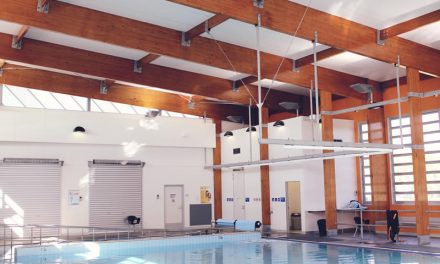MATERIAL STRENGTH
In the early days, sticks of timber were visually sorted into F-grades, such as F5 or F17, depending on the timber species and physical characteristics such as knot sizes and the slope of grain.
Just before the turn of this century, timber producers began to mechanically sort them into MGP grades, such as MGP10 and MGP12, to give us more accurate design properties.
The past few decades have seen the introduction of a diverse range of engineered wood products (EWP) into Australia such as laminated veneer lumber (LVL), glue-laminated timber and, more recently, cross laminated timber (CLT), a material so strong that they used it recently to construct a 10-storey building in Melbourne, with the potential to go even higher.
CONNECTION STRENGTH
In GN Guideline 127, Tim Rossiter discussed bow the strength of a timber connection is dependent on its density and species. Different grades of timber are also sorted into joint groups, such as JD3 and JD5, to reflect their different connection strengths.
As an organic material, the strength of a connection is also dependent on the direction of load to the timber grain.
TIME DEPENDENT STRENGTH
One unusual characteristic of being an organic material is that timber strength (in both material and joint connection) improves with time, just like fine wine. The strength of freshly sawn, unseasoned (green) timber usually rises a grade or more after it has been seasoned or kiln dried to equilibrium moisture content.
Anyone who has renovated an old home might have also noticed how hard aged timber appears to be compared with freshly supplied material. What is also not commonly known is that the design strength of timber varies according to how long the load is steadily applied. The shorter the applied load duration, the higher the timber design strength, which can increase by as much as 100 per cent.
The timber design standard AS1720.1 applies a “˜Duration of Load Factor (k1)’ to the characteristic strength of timber and joint connections. A aterally loaded fastener is capable of resisting twice as much load in a five
second wind gust than it’s able to withstand under a permanent dead load lasting years.
The k1 factors are slightly different between timber material strength and joint connection strength. Although the long duration strength of timber is the lowest, it doesn’t necessarily equate that permanent dead load always governs design. That is because short duration loads (e.g. combined dead load plus live load) are often higher than long duration loads (dead load only).
It is a complicated calculation to tally up all combinations of different load cases, to apply their respective load factors and compare them against their k1 duration of load factors before we find out which load
combination actually governs the design.
What initially looks like a simple roof layout or truss model soon becomes quite a complicated load network. Thankfully, modern day computers have the power to handle all of this information.
The MiTek truss design software quietly and quickly analyses all these load cases and load combinations in the background without the users’ awareness before producing an optimum and safe design outcome.
If you are unsure about load paths, load combinations or how your software handles all of these factors, please contact your supplier’s local engineering office.










